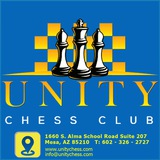Of course, not to the active square f6 , when, after 16...Nf6 17.Nxf6+ Bxf6, White has tightened his grip on the dS-square as planned.
This was the intended destination. Not a surprise, as this is a regular pattern in such structures where both sides have advanced the rook pawn two squares.
Of course, here too Black was intending to exchange the foremost knight, before occupying e4 with the other one. Again, with all four minor pieces on the board, Black suffers some spatial problems; as seen previously, White may follow up with Ne5 and f2 -f3. The drawback is that the knight on b1 will be temporarily inactive (and in other cases, this drawback may just turn out to be too serious!), but here it may even assist the defense.
Having eliminated Black's central knight, White has a huge space advantage and an initiative on the kingside, which proved sufficient compensation for the pawn. White won on move 35.
The Big Decision
On what grounds should you decide on (or refrain from) an exchange of queens? Let's look into some recent examples and discover the various reasons. You will find that the reasons for deciding on an exchange of queens are often the same as for the exchange of any other piece. However, the exchange of queens is bound to have a big influence on the further course of the game. For one thing, the position will be steered towards an endgame.
On what grounds should you decide on (or refrain from) an exchange of queens? Let's look into some recent examples and discover the various reasons. You will find that the reasons for deciding on an exchange of queens are often the same as for the exchange of any other piece. However, the exchange of queens is bound to have a big influence on the further course of the game. For one thing, the position will be steered towards an endgame.
